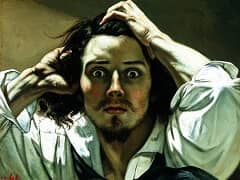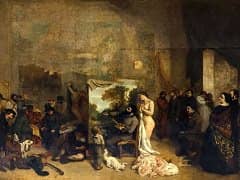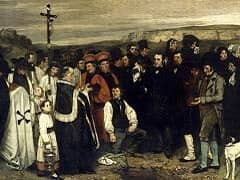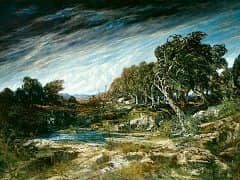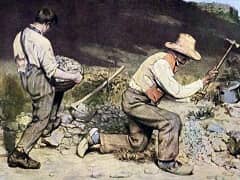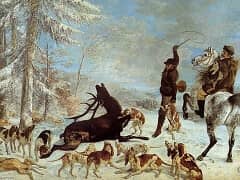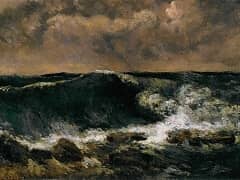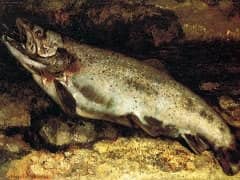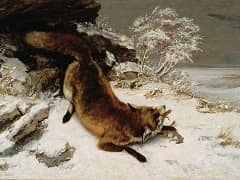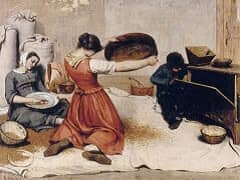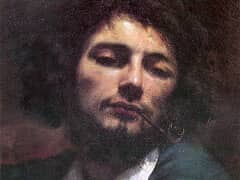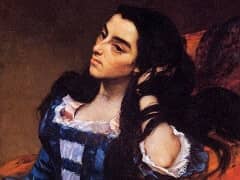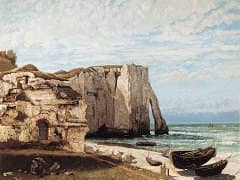After Dinner at Ornans, 1848 by Gustave Courbet
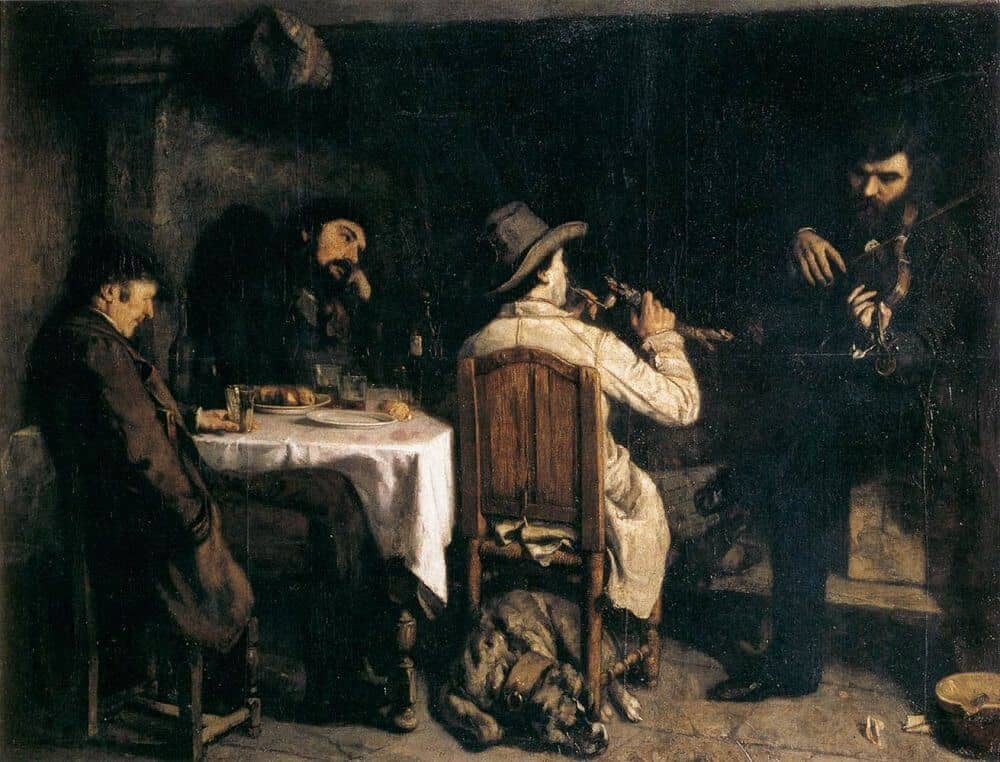
This is the first painting in which Courbet announced his project of presenting particular observations of provincial life on a scale and with a sense of importance commensurate with that of academic history painting. The life-sized figures grouped around the small country dining table are engaged in no activity that could be translated into narrative or dramatic terms; each is focused on his own inner consciousness of that which they have in common, the experience of music. Yet the solidity and scale of the figures and the seriousness of their joint nonaction, their mutual inwardness, can carry the conviction that this is a painting that commands the highest attention. It has moved beyond the familiar realm of the Dutch interiors, which certainly contributed their share to its conception. The more perceptive of its early viewers testified to its originality. Francis Wey, a fellow Franche-Comtois and man of letters who became Courbet's friend, saw the painting at his first meeting with the artist, when he was taken to his studio by Champfleury in the winter of 1848. He wrote in his memoir of Courbet that he could not remember having ever been so unexpectedly astonished; everything about this work of an unknown artist seemed fresh and at the same time accomplished, its qualities unlike those of any known school. Also in his memoir Courbet writes of Eugene Delacroix meeting him in front of the painting on exhibition at the Salon of 1849 and expressing a similar amazement at this revolutionary who had burst upon the scene so suddenly, without precedent. Even not knowing the identities of the figures (which we do from Courbet's specific Salon notes) to be the painter's father and three close friends, we would know that they are not types, not the boors or innkeepers or soldiers or gentlemen of Dutch genre, but individual men living in a particular time and place.

